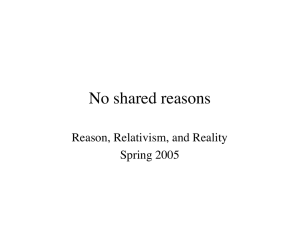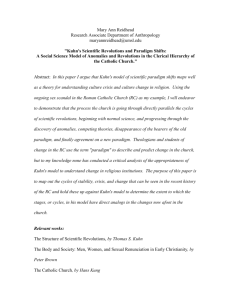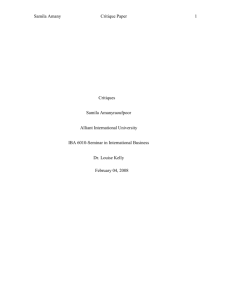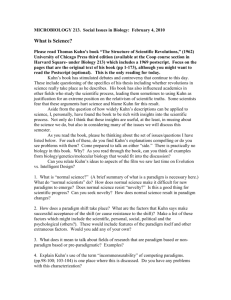gt66a lexicon of the language of social/policy research
advertisement
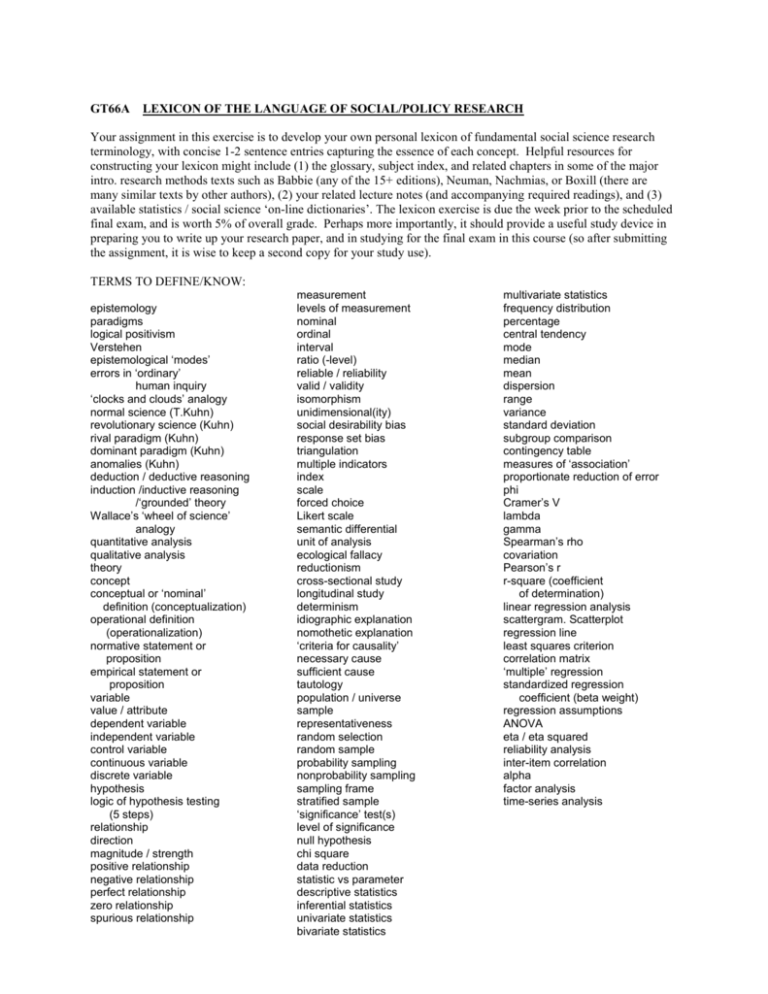
GT66A LEXICON OF THE LANGUAGE OF SOCIAL/POLICY RESEARCH Your assignment in this exercise is to develop your own personal lexicon of fundamental social science research terminology, with concise 1-2 sentence entries capturing the essence of each concept. Helpful resources for constructing your lexicon might include (1) the glossary, subject index, and related chapters in some of the major intro. research methods texts such as Babbie (any of the 15+ editions), Neuman, Nachmias, or Boxill (there are many similar texts by other authors), (2) your related lecture notes (and accompanying required readings), and (3) available statistics / social science ‘on-line dictionaries’. The lexicon exercise is due the week prior to the scheduled final exam, and is worth 5% of overall grade. Perhaps more importantly, it should provide a useful study device in preparing you to write up your research paper, and in studying for the final exam in this course (so after submitting the assignment, it is wise to keep a second copy for your study use). TERMS TO DEFINE/KNOW: epistemology paradigms logical positivism Verstehen epistemological ‘modes’ errors in ‘ordinary’ human inquiry ‘clocks and clouds’ analogy normal science (T.Kuhn) revolutionary science (Kuhn) rival paradigm (Kuhn) dominant paradigm (Kuhn) anomalies (Kuhn) deduction / deductive reasoning induction /inductive reasoning /‘grounded’ theory Wallace’s ‘wheel of science’ analogy quantitative analysis qualitative analysis theory concept conceptual or ‘nominal’ definition (conceptualization) operational definition (operationalization) normative statement or proposition empirical statement or proposition variable value / attribute dependent variable independent variable control variable continuous variable discrete variable hypothesis logic of hypothesis testing (5 steps) relationship direction magnitude / strength positive relationship negative relationship perfect relationship zero relationship spurious relationship measurement levels of measurement nominal ordinal interval ratio (-level) reliable / reliability valid / validity isomorphism unidimensional(ity) social desirability bias response set bias triangulation multiple indicators index scale forced choice Likert scale semantic differential unit of analysis ecological fallacy reductionism cross-sectional study longitudinal study determinism idiographic explanation nomothetic explanation ‘criteria for causality’ necessary cause sufficient cause tautology population / universe sample representativeness random selection random sample probability sampling nonprobability sampling sampling frame stratified sample ‘significance’ test(s) level of significance null hypothesis chi square data reduction statistic vs parameter descriptive statistics inferential statistics univariate statistics bivariate statistics multivariate statistics frequency distribution percentage central tendency mode median mean dispersion range variance standard deviation subgroup comparison contingency table measures of ‘association’ proportionate reduction of error phi Cramer’s V lambda gamma Spearman’s rho covariation Pearson’s r r-square (coefficient of determination) linear regression analysis scattergram. Scatterplot regression line least squares criterion correlation matrix ‘multiple’ regression standardized regression coefficient (beta weight) regression assumptions ANOVA eta / eta squared reliability analysis inter-item correlation alpha factor analysis time-series analysis




